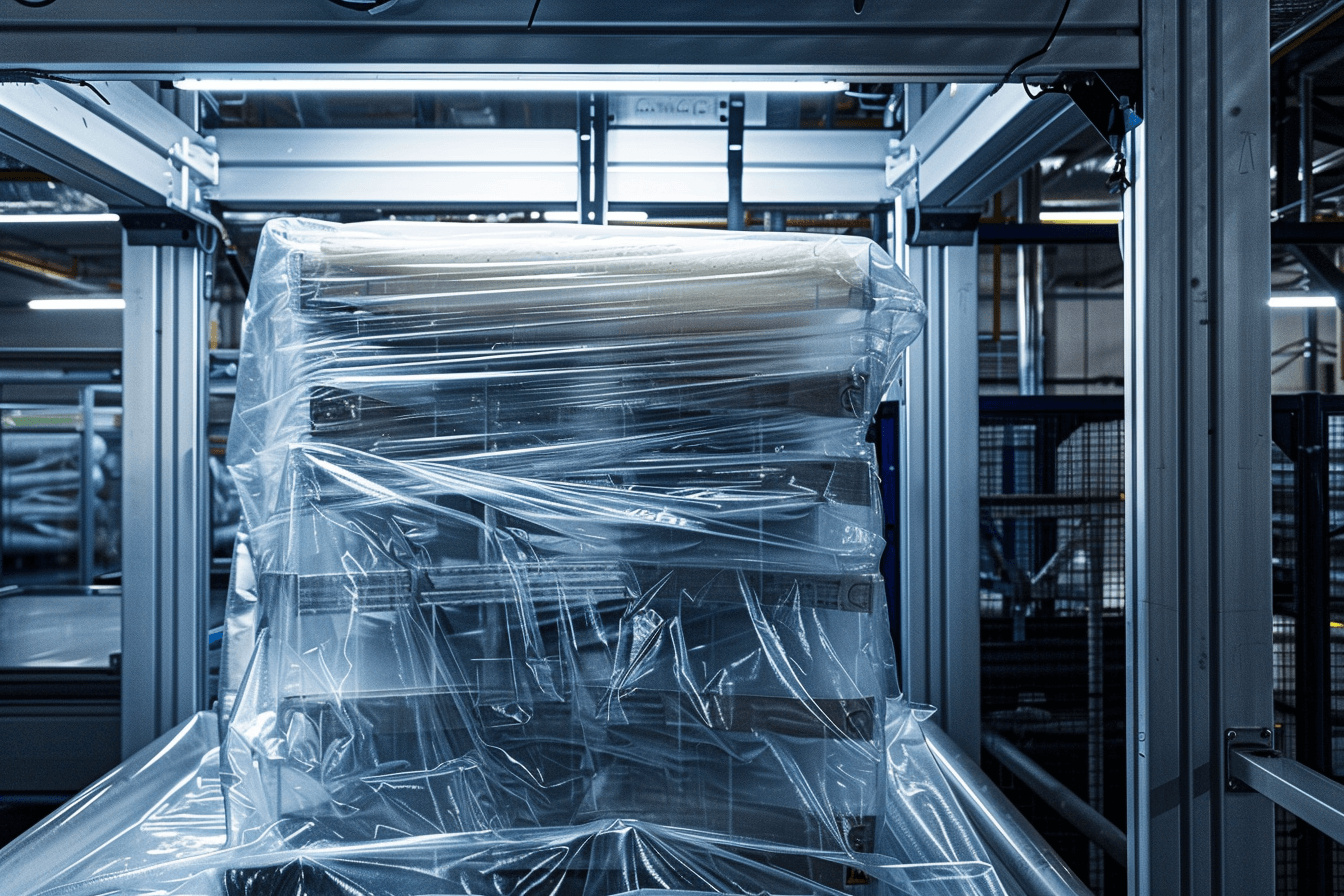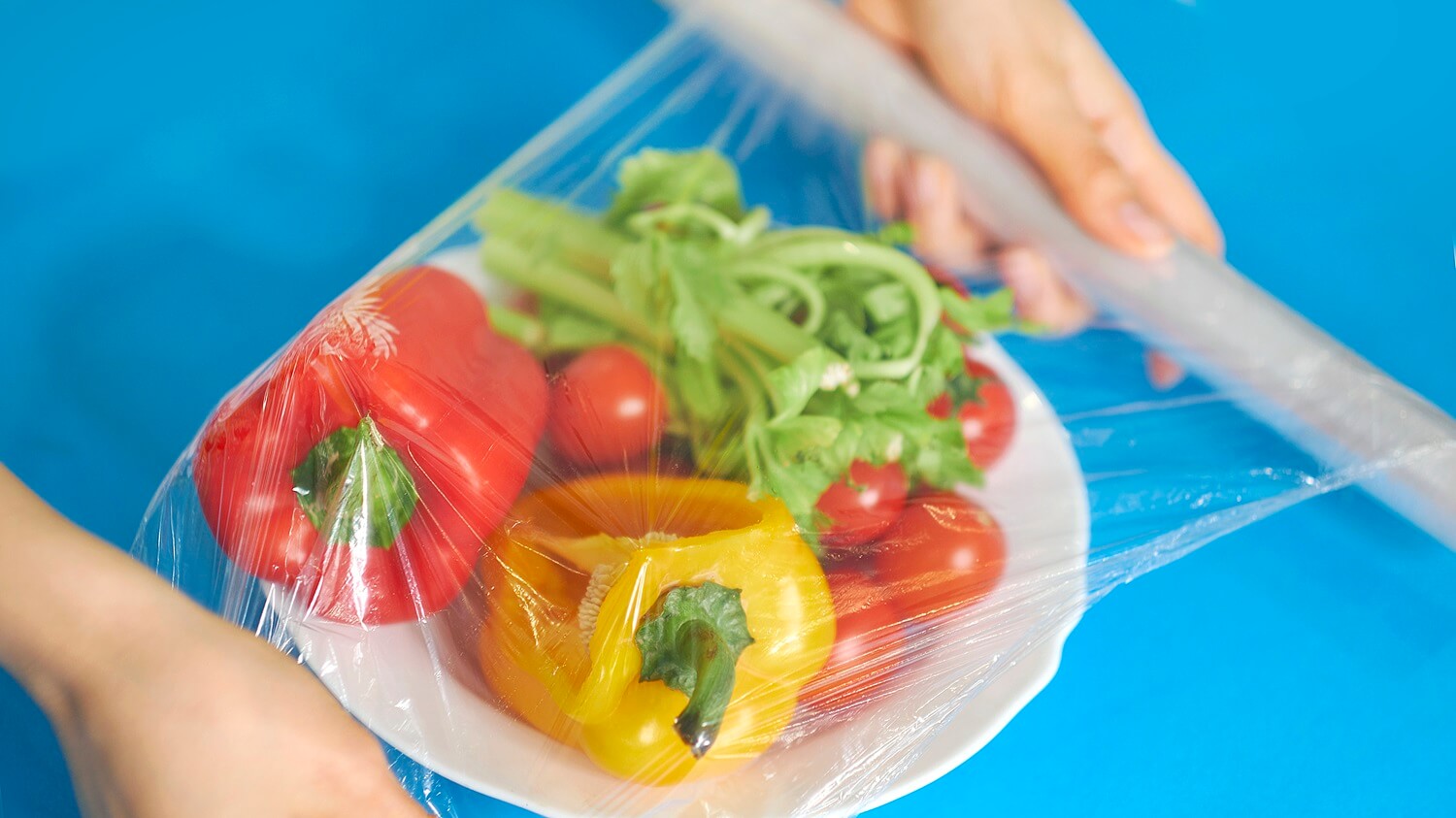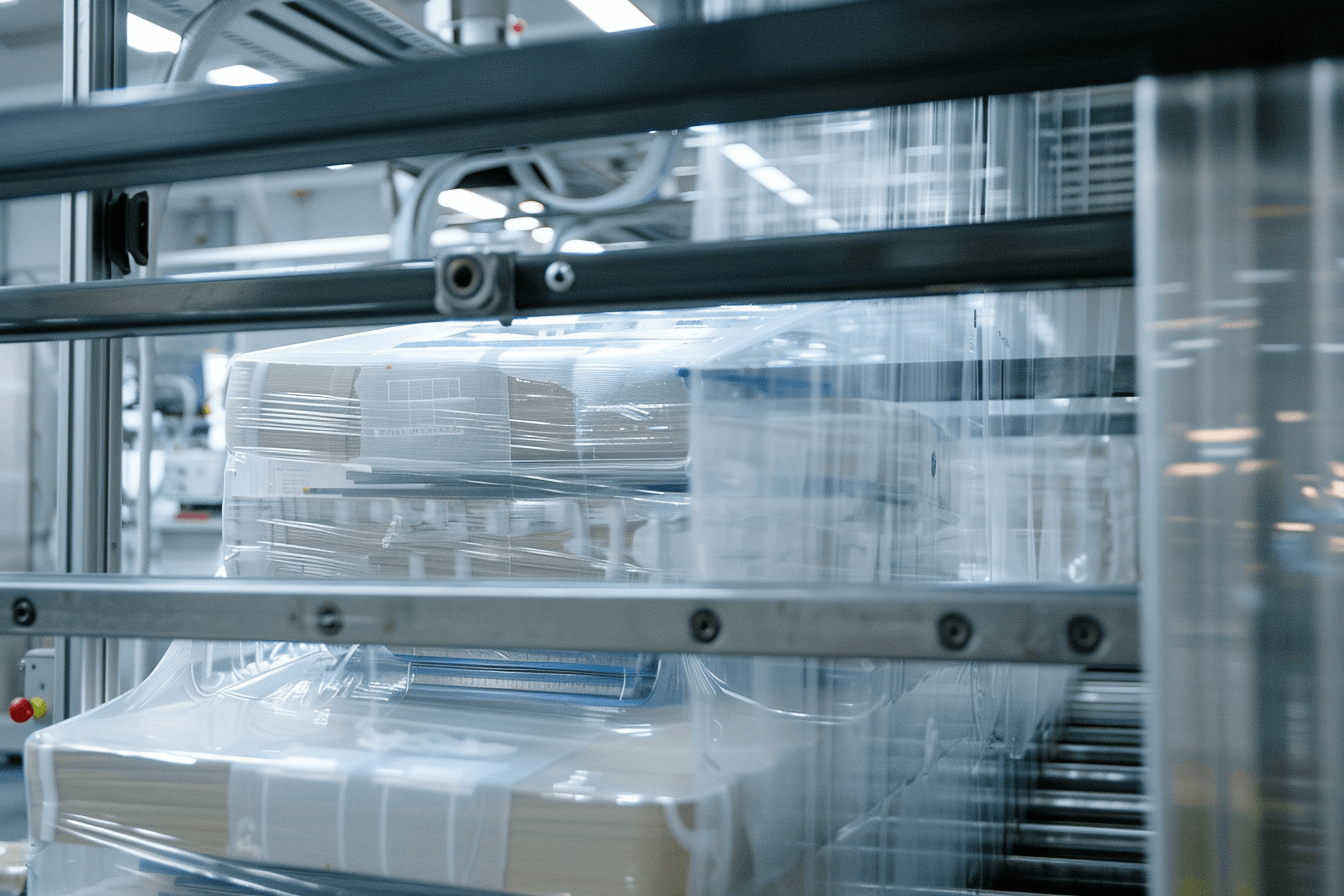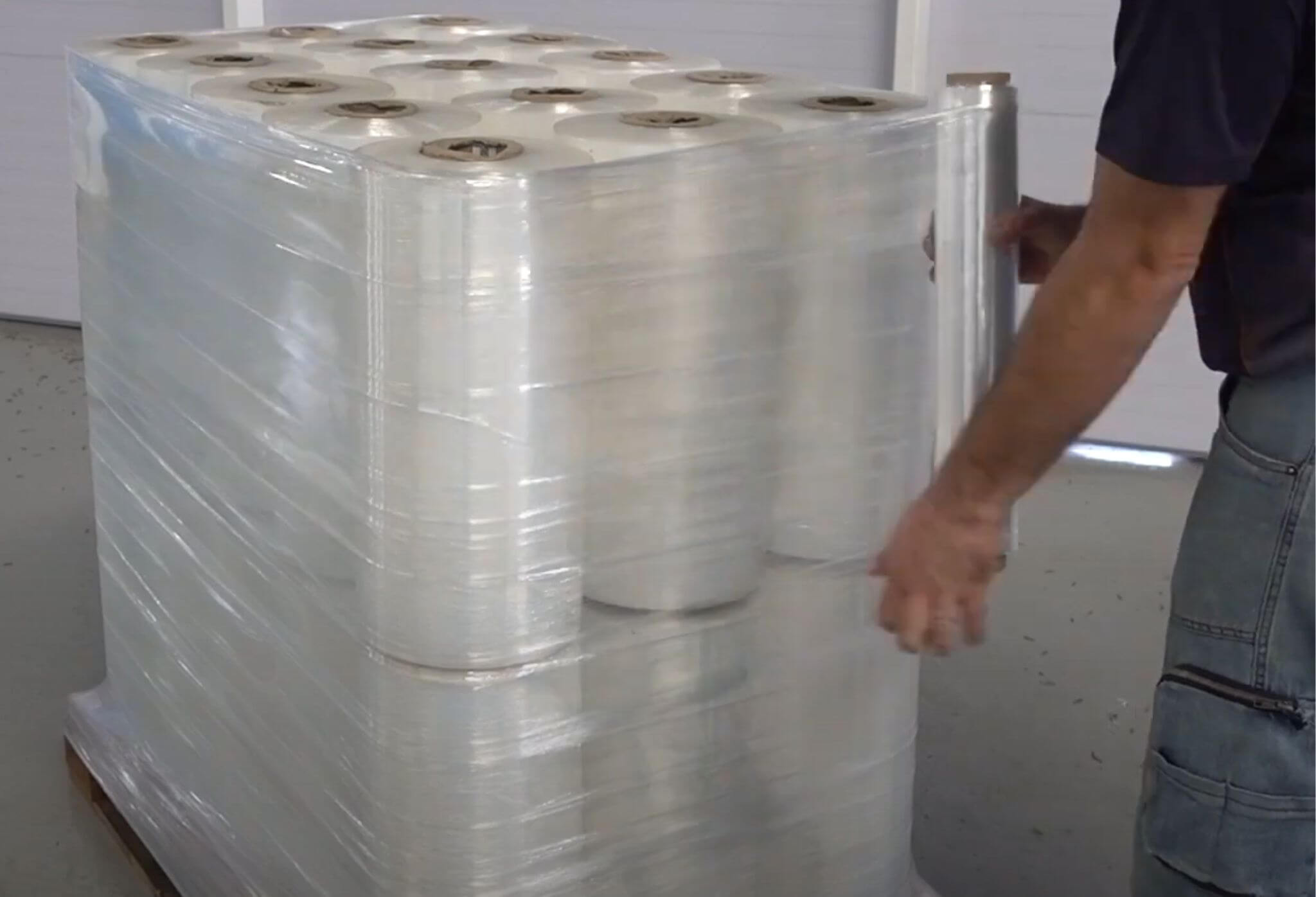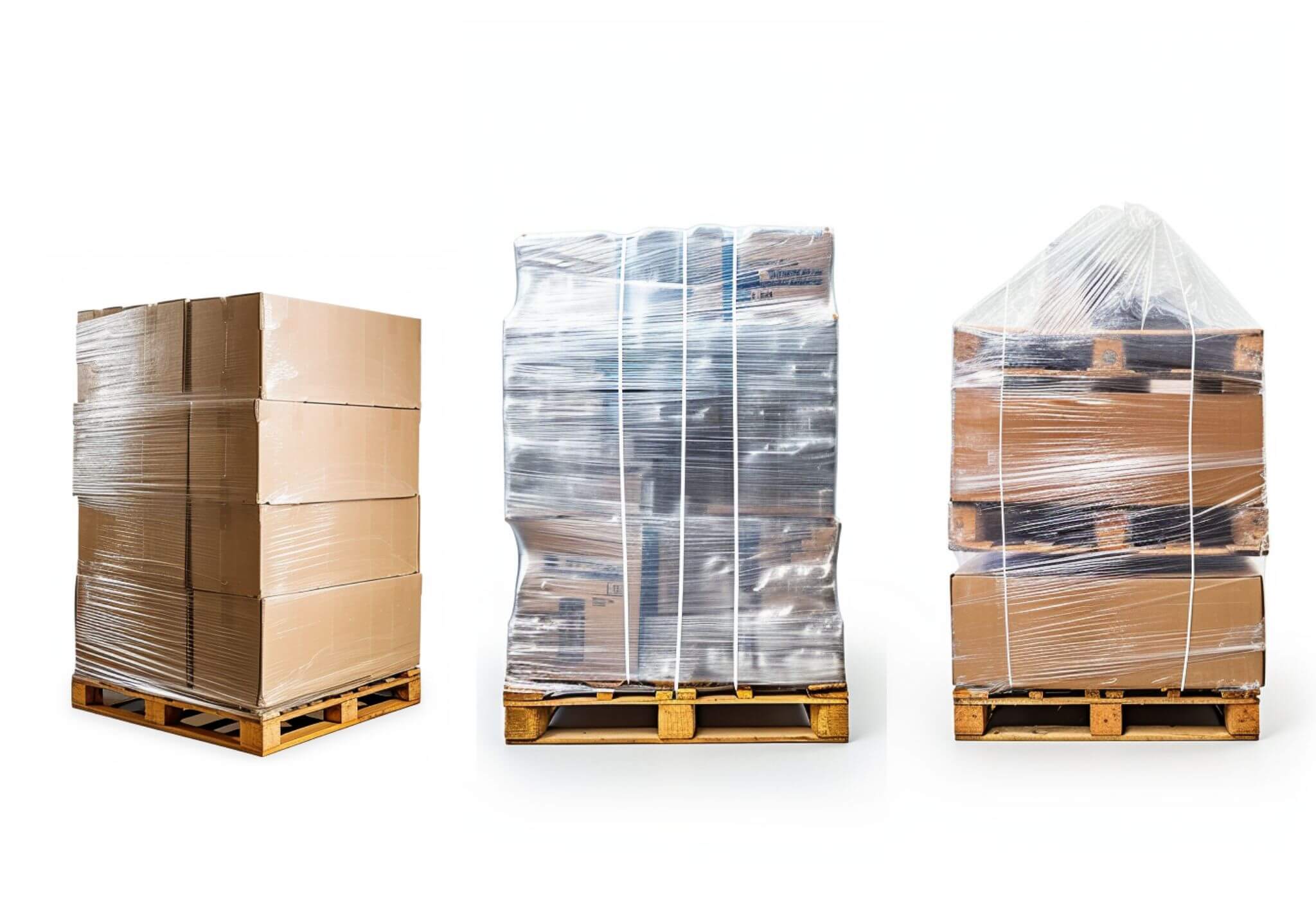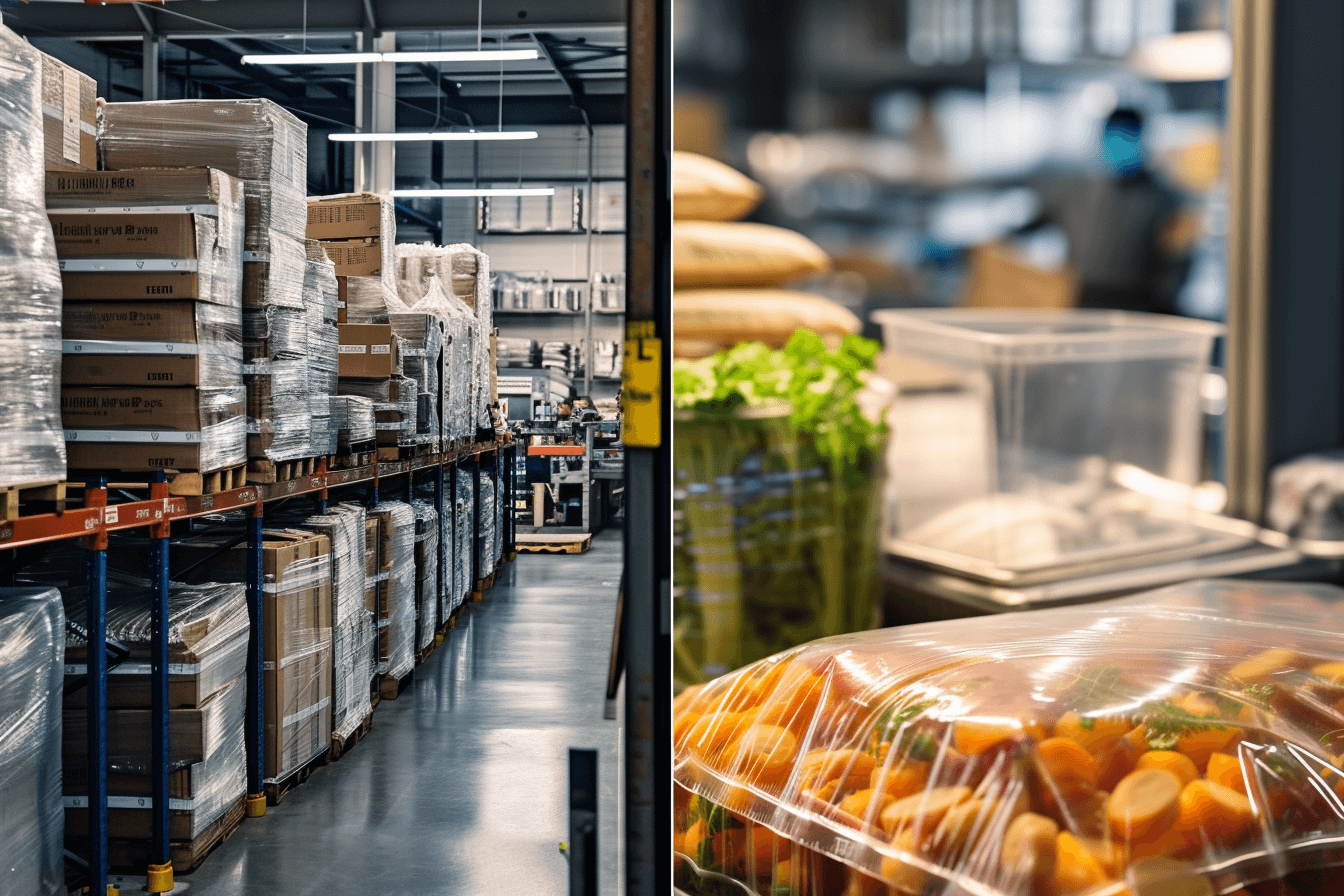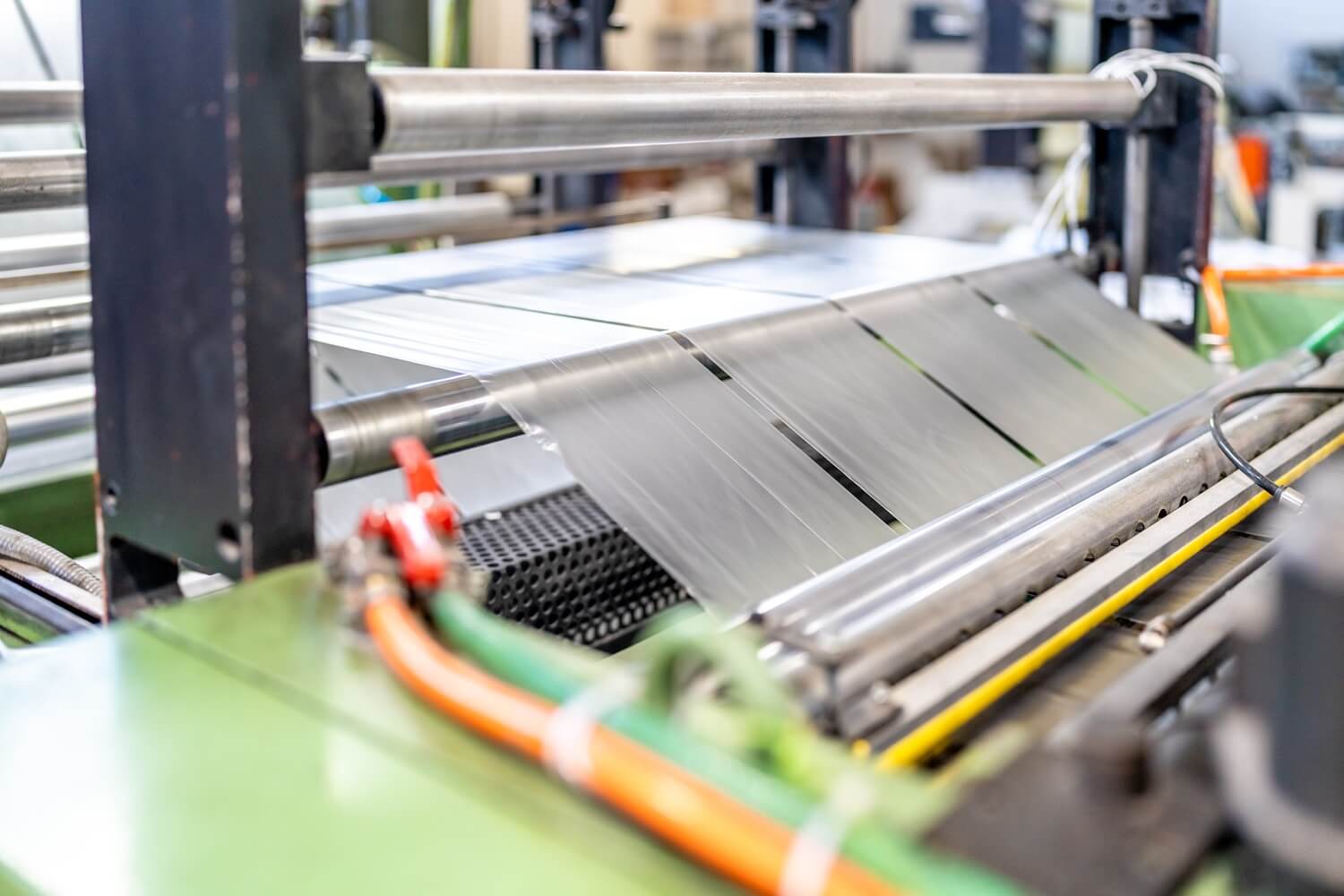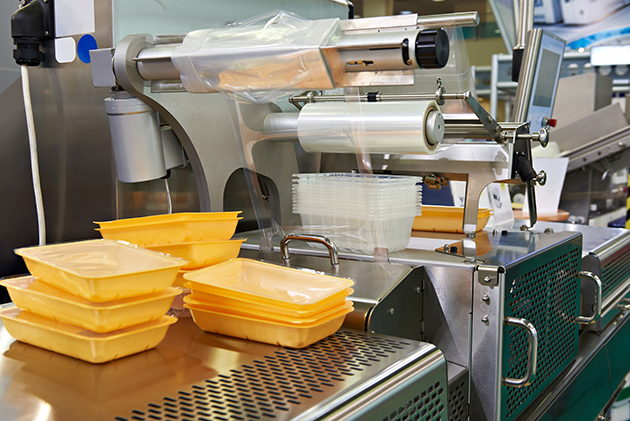Explore how Stretch Hood revolutionizes wrapping in industries, offering superior protection, efficiency, and sustainability. Discover its impact across sectors.
Continue readingPlastic Cling Wrap’s Evolution: Essential for Homes and Food Industry
Explore plastic cling wrap’s evolution, benefits, and eco-friendly alternatives, revolutionizing food preservation in homes and the food industry.
Continue readingStretch Hood: Waterproof Solutions for Challenging Weather Conditions
Discover how stretch hood film safeguards goods from adverse weather, providing waterproof packaging for optimal protection and efficiency.
Continue readingThe Role of Pallet Stretch Film in Reducing Shipment & Transportation Damage
Discover the protective benefits and application methods of pallet stretch film for securing loads during transport.
Continue readingUnwrapping the Differences: Stretch Film, Shrink Wrap, and Stretch Hood Explained
Explore pallet packaging films like Stretch Film, Shrink Wrap, and Stretch Hood to make informed choices for industrial needs.
Continue readingChoosing Between Stretch Film and Food Cling Wrap
Explore the distinctions between stretch film and food cling wrap in packaging and food preservation. From durability to sealing capabilities, learn which material suits your needs best.
Continue reading2024 Packaging Trends: The Future of Plastic Manufacturing Industry
Explore 2024’s packaging trends: interactive packaging, AI’s rise, sustainability movements driving industry towards reusability for an eco-friendly future.
Continue readingSolving Pallet Hand-Wrapping Challenges
Pallet hand-wrapping is a critical step in the logistics and supply chain industry, ensuring the safe and secure transport of goods. While automated wrapping machines have gained popularity, there are situations where hand-wrapping remains a necessity.
Continue readingSustainable Packaging in the Age of Consumer Consciousness
Explore sustainable packaging and consumer consciousness, revealing how eco-friendly solutions shape the future.
Continue readingThe Importance of Recycling for Sustainability in the Plastic Packaging Industry
Delve into the crucial role of recycling in the plastic packaging industry. Learn why recycling is essential for sustainability and the environment.
Continue reading
